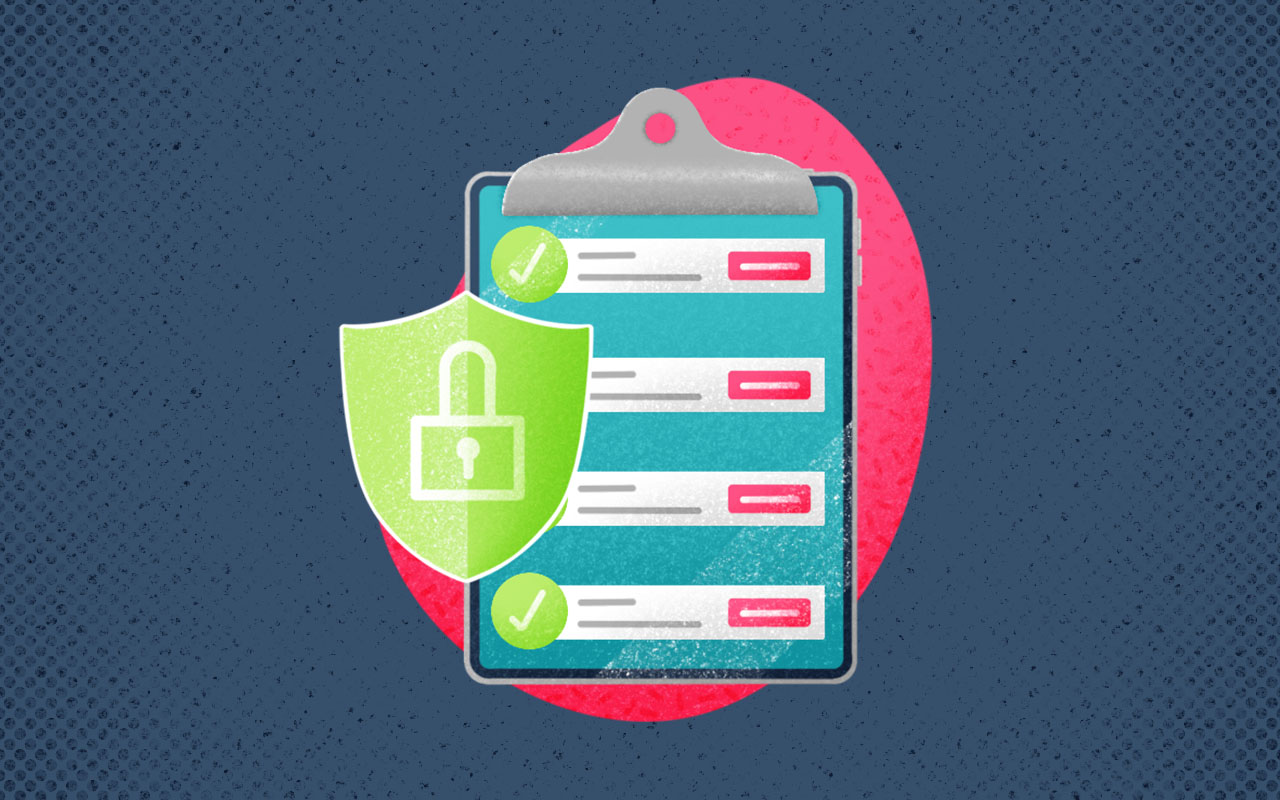Organizations are becoming increasingly technologically advanced and data-centric. To harness the opportunities created by digitalization, they must rely on innovative IT solutions that optimize operations, enhance analytical capabilities, and strengthen the workforce.
At the same time, with the growing reliance on technology, it is imperative to adhere to constantly evolving regulations regarding data and cybersecurity.
In this context, cybersecurity compliance is an essential element of organizational success. It serves both as a protective measure against cyber threats—such as DDoS attacks, phishing schemes, malware, and ransomware—and as a requirement for regulatory adherence.
Rather than a mere checkbox to tick, compliance can be considered a proactive strategy to safeguard valuable digital assets.
Effective compliance requires robust mechanisms, centralized control, and comprehensive documentation. IT Service Management (ITSM) systems, as we will see in this article, play a crucial role in achieving this.
What is Cybersecurity Compliance?
Cybersecurity compliance refers to adherence to laws, regulations, standards, and guidelines designed to protect sensitive information from cyber threats.
Achieving cybersecurity compliance involves implementing advanced security measures and solutions capable of safeguarding data, preventing unauthorized access, and ensuring the integrity and confidentiality of digital assets.
These measures often align with industry standards such as the General Data Protection Regulation (GDPR), ISO 27001, and other international, national, regional, or industry-specific regulations.
Compliance requires organizations to establish the necessary policies, procedures, and controls to mitigate risks (e.g., encrypting sensitive data, monitoring network activity, and maintaining access controls).
For consumers, compliance ensures that their personal data is handled respectfully and securely. For employers and organizations, compliance guarantees business continuity, builds trust with users, and avoids hefty fines and reputational damage.
Cybersecurity Audit: What It Is and Why It’s Important
A cybersecurity audit provides a comprehensive assessment of the information systems, policies, and practices used to ensure compliance with regulations and standards.
The audit process typically involves:
- Data Collection: Gathering information about the organization’s IT infrastructure, including software, hardware, networks, and access controls.
- Risk Assessment: Identifying vulnerabilities and evaluating the potential impact of security breaches.
- Policy Review: Analyzing existing cybersecurity policies and procedures.
- Testing: Simulating cyberattacks to evaluate the effectiveness of security measures.
- Reporting: Delivering a detailed report highlighting findings, recommendations, and compliance status.
Cybersecurity audits focus on various types of data, such as personally identifiable information, financial records, intellectual property, and other sensitive business data. These audits are important because they:
- Identify Weaknesses: Highlight vulnerabilities that could lead to data breaches.
- Ensure Compliance: Demonstrate adherence to legal and regulatory requirements.
- Build Trust: Reassure customers and stakeholders of the organization’s commitment to security.
- Reduce Risks: Minimize the likelihood of financial losses or reputational damage resulting from data breaches or leaks.
By addressing gaps identified during audits, organizations can safeguard critical data, prevent disruptions to operations, protect their reputation, and maintain regulatory compliance. Moreover, audits demonstrate accountability and a proactive approach to risk management.
How to Start a Cybersecurity Compliance Program
Starting a cybersecurity compliance program requires careful planning and a structured approach. Here are the essential steps for setting up an efficient risk analysis and problem-resolution process:
Assess Your Current State and Define Objectives
Perform an analysis to identify existing vulnerabilities, evaluate current security measures, and provide an impartial assessment of your compliance status relative to applicable regulations. Essentially, specify all assets, systems, and data that could be exposed to cyber threats.
Assess the likelihood and potential impact of identified risks. Set clear objectives for your compliance program, such as meeting specific regulatory requirements or improving overall security. Prioritize risks based on severity and organizational tolerance, and set thresholds for action.
Develop Policies and Procedures
Create clear and enforceable cybersecurity policies aligned with regulatory standards like GDPR or ISO 27001. Organizations should also consider major regulations applicable to their industry and geographic location.
These policies should address data management, incident reporting, access control, and acceptable use of technology.
Implement Security Controls
Establish a mix of technical and administrative controls, including firewalls, encryption, multi-factor authentication, and access management systems, to mitigate or transfer risks. Examples include:
- Technical Controls: Implement encryption, network firewalls, password policies, and patch management schedules.
- Physical Controls: Set up surveillance cameras, fencing, and access control mechanisms to protect physical locations.
Train Employees
According to TechTarget, 62% of organizations feel they lack specialized cybersecurity personnel. This highlights the importance of training staff on cybersecurity best practices, data management procedures, and the importance of compliance.
Assemble a dedicated compliance team responsible for overseeing the program. To ensure an effective approach, this team should include representatives from various departments, such as IT, legal, HR, and other relevant functions.
Monitor and Verify
Continuously monitor systems for compliance and conduct regular audits to ensure adherence to policies and standards. Implement a solid incident response plan to quickly and effectively address issues, minimizing potential damage.
Launching a cybersecurity compliance program not only meets regulatory requirements but also fosters greater organizational awareness of security-related issues.
ITSM for Cybersecurity Compliance and Audits: The Role of AI and Automation
In 2022, a report by Accenture revealed that 48% of respondents were already using analytics and big data to enhance their compliance function, and 93% agreed that technologies like cloud and artificial intelligence (AI) simplify compliance by automating tasks and reducing errors.
AI-powered tools can quickly analyze large amounts of data to identify potential threats, monitor compliance metrics, and detect anomalies in real time. Automation simplifies repetitive tasks, such as logging access, updating configurations, and managing incident reports, thereby improving efficiency and reducing human error.
Today’s advanced IT Service Management (ITSM) platforms, integrating AI and automation into a unified framework, are proving extremely useful for ensuring security process compliance. With enhanced data monitoring, streamlined incident management, and timely protocol enforcement, a sophisticated ITSM system enables organizations to better manage risks, adhere to industry regulations, and proactively respond to potential cyber threats.
Benefits of ITSM for Cybersecurity Compliance
One of the main advantages of ITSM is its ability to consolidate data and processes into centralized dashboards that provide real-time visibility into compliance status and help organizations monitor their adherence to cybersecurity standards.
By automating workflows and maintaining a single source of accurate and transparent information, ITSM ensures that documentation is always audit-ready.
ITSM platforms simplify compliance by automating routine tasks, such as access log monitoring, configuration management, and incident tracking. Critical activities are thus recorded accurately and consistently, reducing the likelihood of human error.
Cybersecurity compliance is not just about avoiding fines or meeting regulatory requirements; it’s also about building trust with stakeholders. Customers and partners expect organizations to prioritize data security and demonstrate reliability. By leveraging ITSM platforms, organizations can meet these expectations.
How ITSM Impacts Cybersecurity Compliance: EasyVista’s TX-RAMP Certification
The recent certification of EasyVista’s EV Service Manager under the Texas Risk and Authorization Management Program (TX-RAMP) highlights the company’s commitment to product security and the protection of critical data.
TX-RAMP, established by the Texas Department of Information Resources (TDIR), provides a standardized framework for evaluating and certifying the security of cloud computing services used by Texas state entities. The program emphasizes the protection of personally identifiable information and sensitive data associated with operations.
By achieving TX-RAMP certification, EV Service Manager demonstrates its compliance with stringent security standards.
EasyVista’s commitment to cybersecurity for compliance and audits has immediate and tangible benefits, such as a cost reduction of up to 50% through features like no-code configuration, intelligent automation, and ready-to-use ITIL processes.
For organizations seeking to simplify compliance, protect their operations, and enhance stakeholder trust, ITSM is a valuable ally, capable of expediting the preparation of flawless audits and implementing robust practices to safeguard cybersecurity.
FAQs
- What is cybersecurity compliance?
Cybersecurity compliance refers to adherence to regulations that protect sensitive data from cyber threats.
- Why is a cybersecurity audit important?
A cybersecurity audit helps identify vulnerabilities, ensure compliance, build trust, and reduce reputational and financial risks.
- What are the benefits of ITSM for cybersecurity compliance?
ITSM platforms offer features like data consolidation, task automation, error reduction, and improved adherence to cybersecurity standards.
- How does AI support cybersecurity compliance?
AI enhances efficiency and reliability by analyzing vast amounts of data, detecting threats in real time, and automating tasks. For instance, AI solutions can simultaneously assess compliance with multiple standards by cross-referencing security measures with regulatory requirements.
2025 Gartner®Market Guide for ITSM Platforms
Get the latest ITSM insights! Explore AI, automation, workflows, and more—plus expert vendor analysis to meet your business goals. Download the report now!


